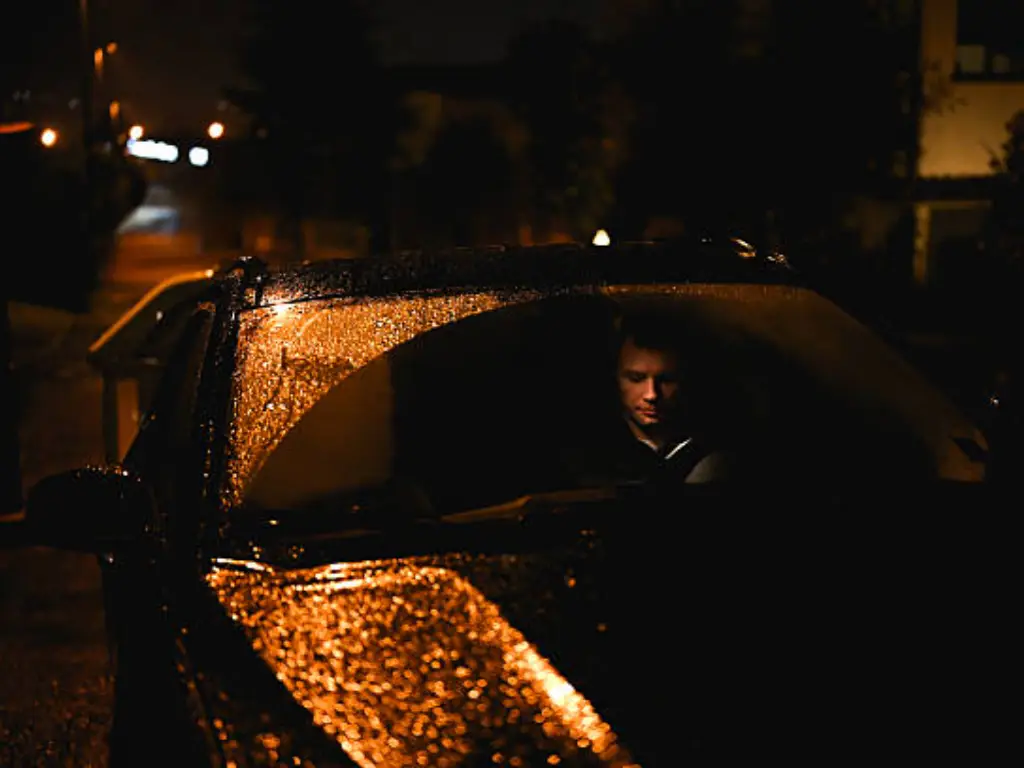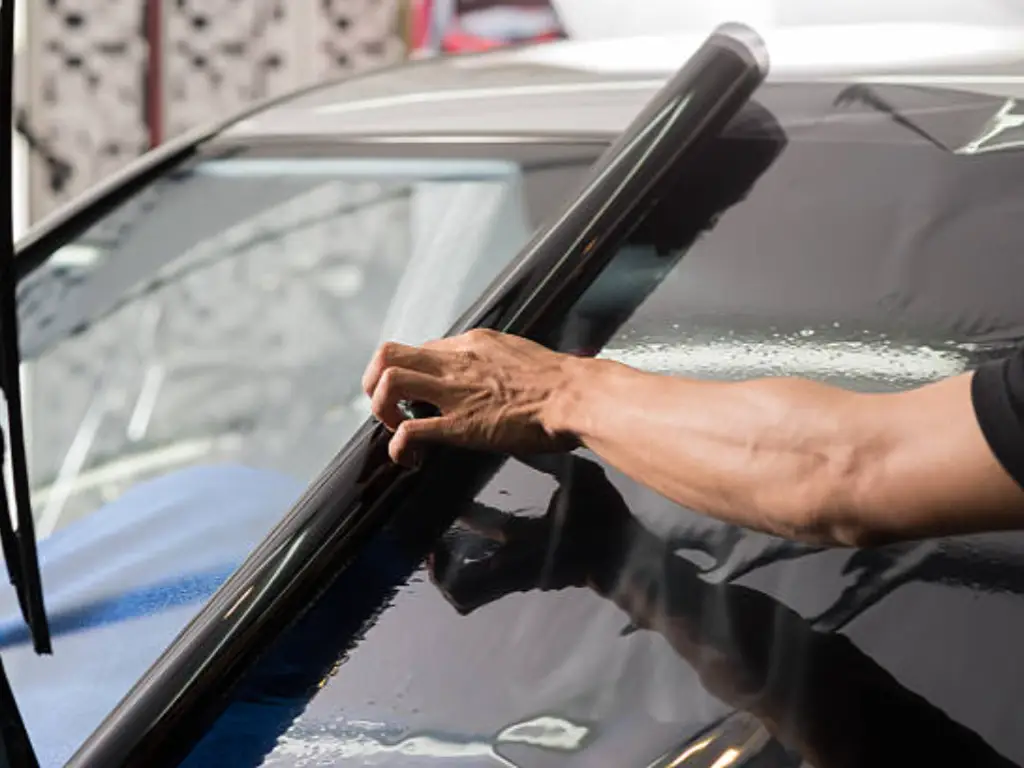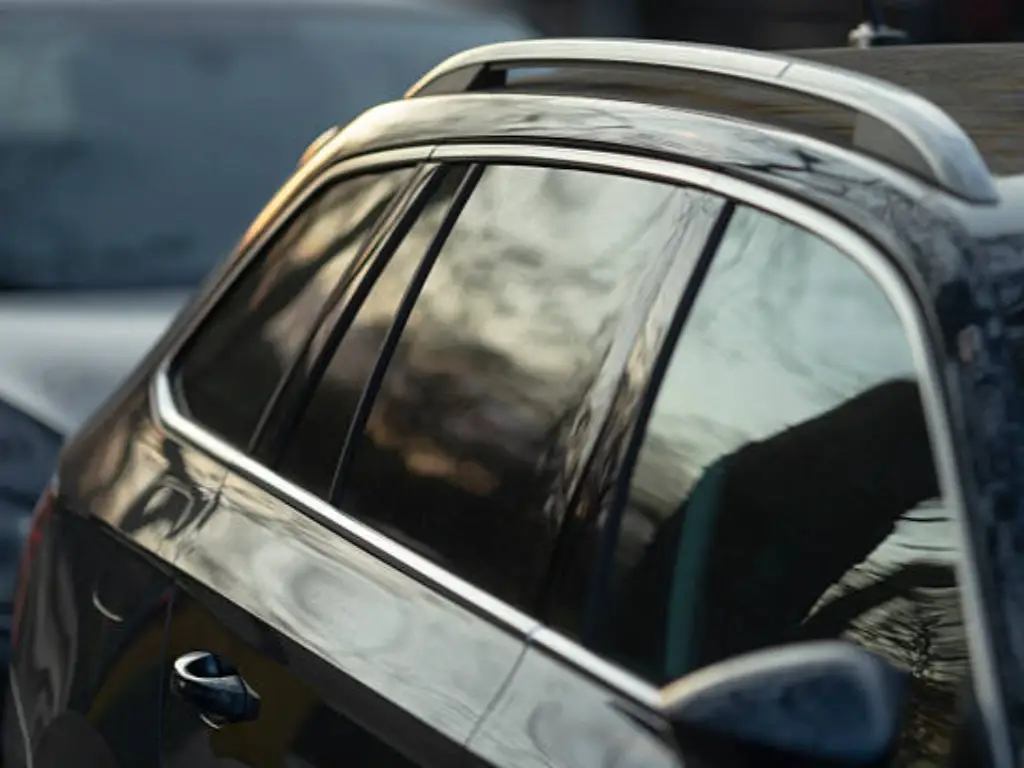The dark tinting of windows is quite attractive. It brings to mind the image of privacy, prestige and cool comfort, making a regular car look smoother and mysterious. The 5% shade is the ultimate in terms of vehicle privacy amongst the many colors offered. However, behind this daring design is a superstructure of window tinting regulations and serious safety concerns that all automobile owners have to face. In the summer, less light entering your vehicle due to the dark tint makes the interior cooler. It is very important to see the big picture before making a decision that would affect not only your driving record, but also your well-being. The laws, the hazards, and the better modern substitutes of the dangerously dark tint darkness will be presented in a clear, objective breakdown in this guide.
What Exactly is 5% “Limo” Tint?
The regulation can only be known by knowing the terminology. The percentage of Visible Light Transmission (VLT) of a car window tint is used to measure the darkness of a car window. A lower VLT percentage is defined as the amount of visible light passing through the car windows and through the tint film that is applied.
A film that admits only 5 percent of visible light into the window is called a 5 per cent tint, or a 5 per cent filter. On the other hand, it absorbs 95 per cent. of the exterior light. It is this very low light transmission that produces the kind of almost opaque blacked-out look that has given it the industry name Limo Tint. Although the privacy glass provided on the back rear windows of new SUVs and vans is factory-installed, it is rarely this dark. Almost all VLT below 5% is an aftermarket modification.
This is the deep-light-blocking power which lies at the centre of the law-making controversy. Although it provides the best privacy to a driver, it completely changes the way a driver sees things around him/her, the capability of other people including those in law enforcement to peep in the car. Knowing this basic measure is the initial move towards recognizing why state lawmaking bodies have been so careful and, in many cases, so restrictive of its application.

The Short Answer: Is 5% Tint Legal?
Now we will turn to the main question. A 5 percent car window tint is unlawful on the front window and the entire windshield of the vast majority of vehicles driven on the public roads in the United States.
At the state lines, there is hardly any ambiguity about this. These are the particular windows that are considered vital to the driver’s vision, and there are specific laws formulated to maintain a high level of light transmission so that they can operate safely. The exact amount of tint and VLT percentages will depend on the individual state, but no state has a tint as dark as 5% on the windows next to the driver and front passenger. In the case of the whole windshield, more stringent regulations apply; except that most states do not allow a non-reflective tint applied to the upper few inches (usually the upper 5 or 6 inches, or higher than the manufacturer AS-1 line) to prevent sun glare.
The rear windshield, as well as the back windows, including the rear side windows, usually have other, looser tinting restrictions, particularly on multi-purpose vehicles such as SUVs, trucks, and vans. Some states allow these windows to have much lower percentage of VLT, or allow any degree of darkness. Nonetheless, in the area where it may be lawful on the rear window, the tint darkness of 5 per cent on any window can draw the undesired attention of the law enforcement officers, causing traffic stop and searches. By asking this question in advance, we can effectively create a clear point of departure: deciding to tint most of your car windows with a 5% tint is not an issue of personal taste at all, but simply a direct contravention of the laws of car window tinting in most jurisdictions.
Key Dangers of Driving with Dark Tint
The strict legislation regarding dark tints and tint restrictions is no accident. It is based on the concrete, documented safety hazards that the tint poses to drivers, pedestrians, and officers. These regulations can be explained by taking into consideration two major areas of concern.
The safety of the driver himself is compromised first. A 5 percent VLT film significantly decreases the light entering the eyes of the driver. This can be bearable in the light hours of the daytime. But it is very dangerous during the critical driving times, which include dusk, dawn, and night hours. The capacity to notice a pedestrian wearing dark clothing, or a cyclist without lighting, or an animal on a road with bad lighting is incredibly low. It becomes very difficult to navigate in the dark like in rural roads or in underground parking garages that have more than one level. This decrease in visual acuity is true in bad weather; in heavy rain or heavy fog visibility through a 5-percent tinted window is severely affected, and reaction time is slackened when most needed.
The second fundamental problem is police and crime. The capability of a police officer to observe the occupants of a vehicle should be a crucial aspect of their safety procedures during a traffic stop. It enables them to evaluate the situation, observe the hands of the driver, determine the number of passengers, and identify any form of threat. Opaque windows are a dangerous veil of anonymity that increases the exposure of all officers on the road. This applies to other drivers and pedestrians who tend to look directly at a driver to determine what they will do at an intersection and in a parking lot. Where such visual association cannot take place, the rich non-verbal communication of driving fails and the chances of a car crash are high.

State-by-State Window Tint Laws
Navigating the specific tint laws for each state is the most critical step for any vehicle owner. The regulations are highly specific, often differentiating between sedans and SUVs/vans and detailing distinct VLT percentages for each window. The table below provides a general guide to these laws.
Disclaimer: Car window tint laws are subject to change. This table is for informational purposes only. Always verify the current statutes with your state’s Department of Motor Vehicles (DMV) or a local law enforcement agency before applying any window tint.
| State | Windshield | Front Side Windows | Back Side Windows | Rear Window | Notes |
| Alabama | Non-reflective tint allowed above AS-1 line | 32% VLT | 32% VLT | 32% VLT | |
| Arizona | Non-reflective tint allowed above AS-1 line | 33% VLT | Any Darkness | Any Darkness | |
| California | Non-reflective tint on top 4 inches | 70% VLT | Any Darkness | Any Darkness | Front side windows cannot be darker than factory standard. |
| Colorado | Non-reflective tint on top 4 inches | 27% VLT | 27% VLT | 27% VLT | |
| Florida | Non-reflective tint allowed above AS-1 line | 28% VLT (Sedan) | 15% VLT (Sedan) | 15% VLT (Sedan) | SUVs: Front 28%, Rear Any Darkness |
| Georgia | Non-reflective tint on top 6 inches | 32% VLT | 32% VLT | 32% VLT | |
| Illinois | Non-reflective tint on top 6 inches | 35% VLT | 35% VLT | 35% VLT | |
| New York | Non-reflective tint on top 6 inches | 70% VLT | 70% VLT | Any Darkness | |
| North Carolina | Non-reflective tint allowed above AS-1 line | 35% VLT | 35% VLT | 35% VLT | |
| Ohio | Non-reflective tint allowed | 50% VLT | Any Darkness | Any Darkness | |
| Pennsylvania | No tint permitted | 70% VLT | 70% VLT | 70% VLT | |
| Texas | Non-reflective tint on top 5 inches or AS-1 line | 25% VLT | 25% VLT | Any Darkness | Law applies to back side windows if rear window is tinted. |
| Virginia | Non-reflective tint allowed above AS-1 line | 50% VLT | 35% VLT | 35% VLT | |
| Washington | Non-reflective tint on top 6 inches | 24% VLT | 24% VLT | 24% VLT |
As this data clearly shows, the legal limit for front side windows is consistently far lighter than 5%. Failing to adhere to these specific regulations can result in fines, “fix-it” tickets requiring the removal of the tint, and failed vehicle inspections.
Medical Exemptions: The Legal Exception
The laws are tough, but there is a known channel through which persons with certain medical issues can use darker tints on their windows legally. A medical exemption is provided in most states, and permits a reduced percentage of VLT than law normally authorizes.
These exemptions do not come with the stroke of a pen and are only granted to individuals who have been shown to have medical needs that necessitate them to be shielded against ultraviolet (UV) light and bright sunlight. Examples of such conditions would include, but are not limited to, Lupus, solar urticaria, xeroderma pigmentosum, and other dermatological or ophthalmological diseases that cause severe photosensitivity.
The medical exemption procedure normally follows a number of procedures. First, the patient should visit his/her doctor or ophthalmologist and receive a detailed diagnosis and a formal prescription of the medical necessity of a certain percentage of VLT. This prescription or affidavit oftentimes must be on an official form that is issued by the DMV of the state. The owner of the vehicle is then required to present such medical documents to DMV to be approved. In the event of approval, the state typically issues a certificate or sticker that the vehicle is required to keep at all times and be displayed to law enforcement officers, when the need arises.

Legal Tints, Superior Performance
The fact that 5% tint is mostly illegal and unsafe does not imply that you should be deprived of your privacy, comfort or protection. There has been a change in the debate on legal tinting. With the help of modern technology, tinting of windows and high performance are mutually exclusive no more. You are able to produce outstanding outcomes without breaking state laws.
The essence of the modern window tint technology is no longer to just be dark, but to be efficient. High tech film Tint film is designed to allow certain light wavelengths to pass through, and block others. The sunlight energy is made up of visible light (the one we see), ultraviolet (UV) radiation (the one that burns the skin and the interior), and infrared (IR) radiation (the one that we feel as heat). The finest movies aim at blocking the invisible UV rays and IR.
So, at a 50 percent or 35 percent VLT that is not banned in the front window tint of many states, the high-performance ceramic window tint of ClearPro can still prevent more than 99 percent of damaging ultra-violet ray and much of the heat-producing infrared. Typically a good quality, lighter ceramic tint can perform better than the low-cost, dark 5% dyed film in heat rejection, all at the cost of a safer and more transparent image of the road. No longer do you need to decide between a cool cabin with some protection and good visibility. You can have the best of both and you can still obtain a sophisticated beauty without the accompanying dangers of over-tinting.
Not All Window Tints Are Created Equal
It is a myth that any window film with the same VLT percentage will be the same. As a matter of fact the material science and manufacturing process of the film is what actually determines its performance, durability and clarity. The market is widely diversified into two kinds of films, the older traditional dyed films and the contemporary high performance ceramic films.
The simplest form is traditional dyed film, which is not expensive. It is made up of sheets of coloured polyester that captures heat energy. Although it alleviates glare and provides privacy, it has a poor performance. The dye can easily fade and turn purple with time under UV exposure, and under heat, the rejectance capacity is low. The films may also bubble and peel away as time passes and make the vehicle look ugly.
In sharp contrast, the highest level of film technology is high-performance ceramic tint. The construction in this movie uses non-conductive, non-metallic nano-ceramic particles. These microscopic particles are remarkable at absorbing IR and UV radiation without the need to be dark. This results in several key advantages:
- Superior Heat Rejection: It keeps your car significantly cooler without a “blacked-out” look.
- Exceptional Durability: It is chemically stable and will not fade or change color over its lifetime.
- Unmatched Clarity: High-quality ceramic films provide a crystal-clear view with no distortion.
- No Signal Interference: Unlike older metallic films, ceramic films do not interfere with cell phones, GPS, or radio signals.
As an innovator in film technology, ClearPro focuses exclusively on developing and manufacturing these top-tier window film products. We have moved beyond outdated technologies to ensure that every film we produce offers superior optical clarity and lasting performance. This commitment to quality makes it a smart, long-term investment in your vehicle’s comfort and value.
Make the Smart & Safe Choice
The decision to tint your vehicle’s windows involves more than just aesthetics. It is a choice that carries legal responsibilities and has a direct impact on your safety. As we have established, a 5% “Limo Tint” is an illegal and hazardous choice for the critical windows on most passenger vehicles. The severely restricted visibility, particularly at night, creates an unacceptable level of risk for you and everyone else on the road.
Adhering to your state’s legal requirements is the first and most important step. The second is understanding that modern technology provides a far better solution than simply choosing the darkest degree of tinting. A high-quality ceramic car window tint from a reputable manufacturer will deliver superior heat rejection, 99% UV protection, and long-lasting color stability in a variety of legal shades.
By choosing a legal tinting, professionally installed, high-performance window film, you are making the smartest investment possible while ensuring compliance with state regulations. You enhance your driving comfort, protect your vehicle’s interior from sun damage, and most importantly, you do so without compromising the safety of yourself or others. We encourage you to explore the range of advanced, legal tint options available and make a choice that is both intelligent and responsible.








